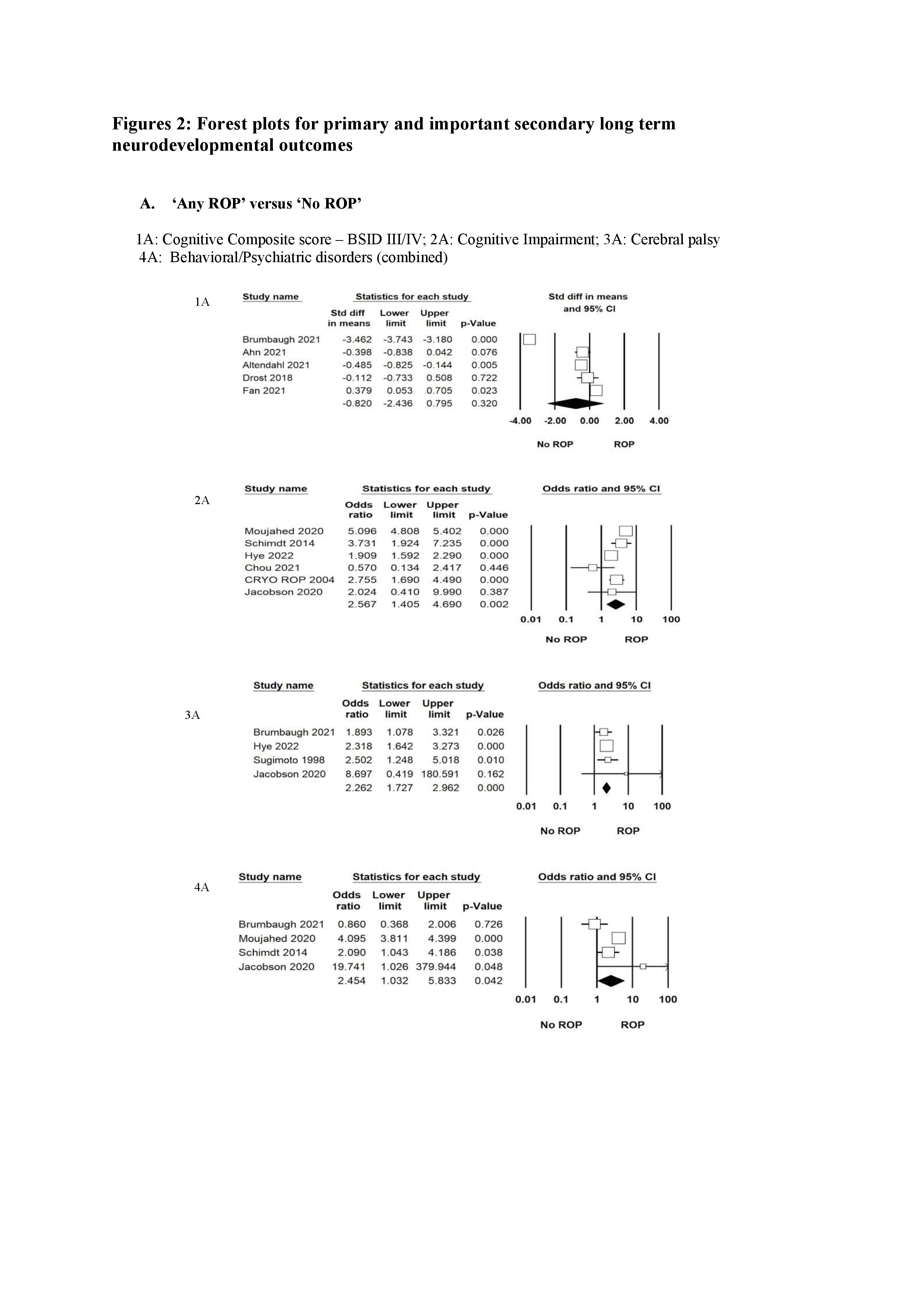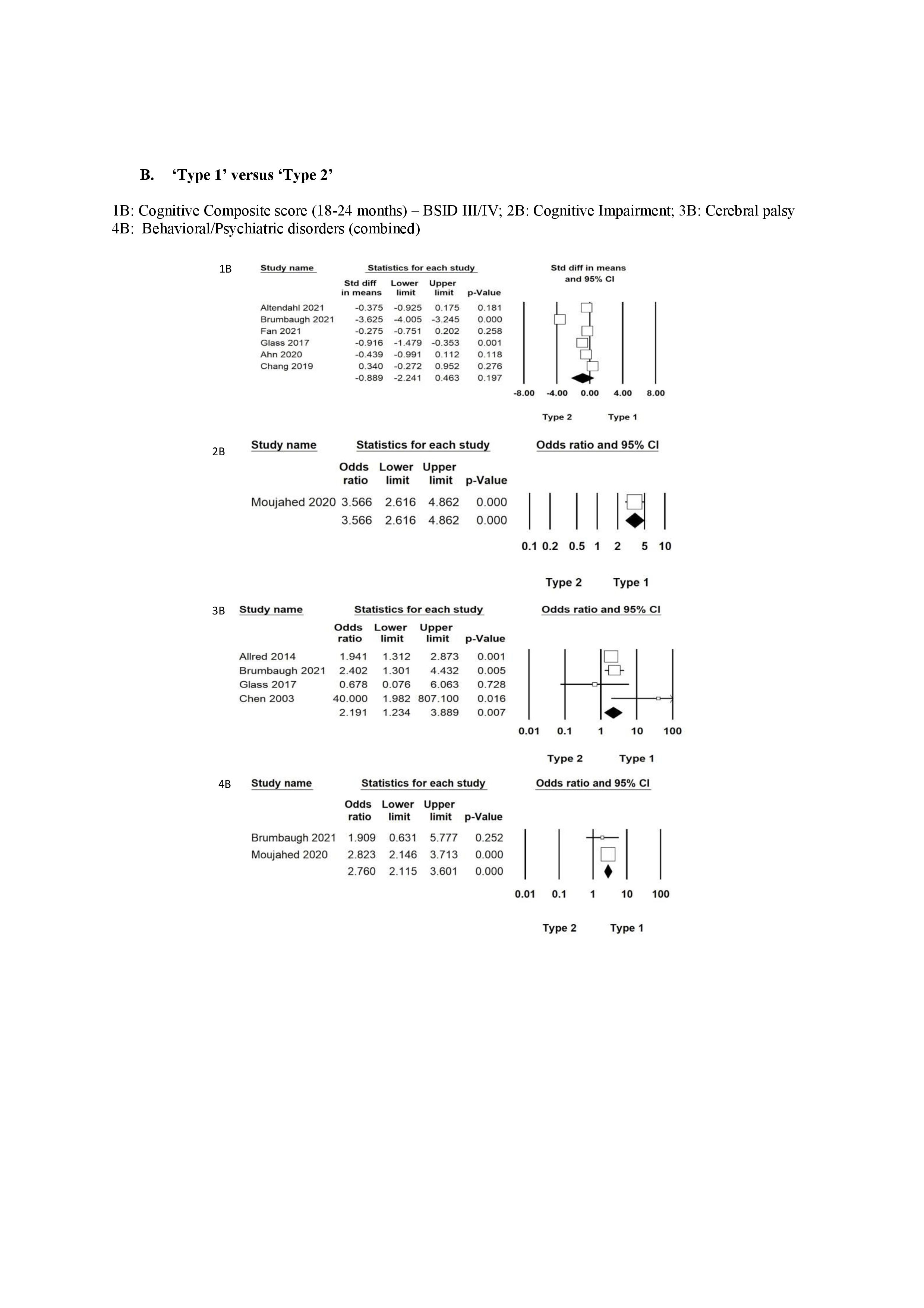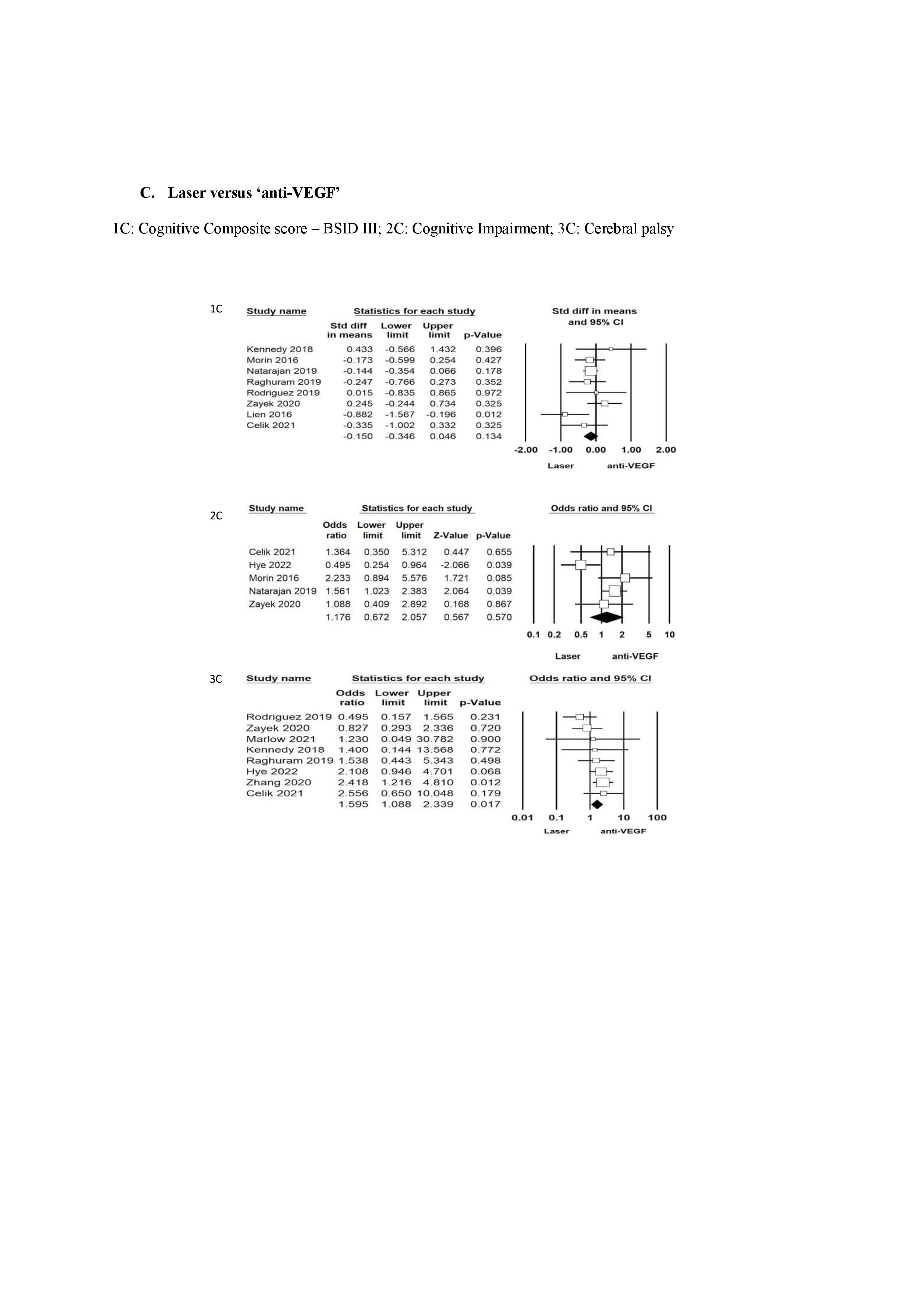Neonatal Follow-up
NICU Follow Up and Neurodevelopment 1: Developmental and Sensory Disorders
203 - Retinopathy of Prematurity and Neurodevelopmental outcomes in Preterm Infants (NeuROPPIn) – A Systematic review and Meta-analysis
Friday, April 28, 2023
5:15 PM - 7:15 PM ET
Poster Number: 203
Publication Number: 203.142
Publication Number: 203.142
Shivashankar Diggikar, Oyster Woman and Child Hospital, Bengaluru, Karnataka, India; Puvaneswari Gurumoorthy, Center for cellular and molecular platforms, bengaluru, Karnataka, India; PAULA ROXANA. TRIF, OR, Oradea, Bihor, Romania; Diana A. Mudura, Emergency County Hospital Oradea, Oradea, Bihor, Romania; Karthik N. NAGESH, Manipal Hospitals , Bangalore, India, BANGALORE, Karnataka, India; Radu Galis, clinical emergency county hospital Oradea, Oradea, Bihor, Romania; Boris Kramer, Neuroplast BV, Aachen, Nordrhein-Westfalen, Germany; Anand Vinekar, Narayana Nethralaya, Bengaluru, Karnataka, India

Shivashankar Diggikar, MD, FRCPCH (he/him/his)
Consultant Neonatologist
Oyster Woman and Child Hospital
Bengaluru, Karnataka, India
Presenting Author(s)
Background:
Retinopathy of Prematurity (ROP) and abnormal brain development share similar risk factors and mechanisms. There has been contrasting evidence on the association of ROP with adverse neurodevelopmental outcomes.
Objective:
We analysed the association between ROP at levels of severity and treatment with all neurodevelopmental outcomes until adolescence.
Design/Methods:
Data source
We followed PRISMA guidelines and searched Medline and Embase from August 1st,1990 to March 31st, 2022.
Study Selection and Participants
Randomized or quasi-randomized clinical trials and observational studies on preterm infants (< 37 weeks) with ROP (Type 1/severe ROP, Type 2/milder ROP, laser/anti-VEGF) were included.
Data extraction and synthesis
We included the studies on ROP and any neurocognitive or neuropsychiatric outcomes.
Outcomes
Primary outcomes: Cognitive Composite scores (CCS) evaluated between 18–48 months of age by BSID or equivalent Scale, Neurodevelopmental impairment (Moderate to severe NDI/Severe NDI), cerebral Palsy, cognitive impairment, and Neuropsychiatric/behavioural problems. Secondary outcomes: Motor and Language composite scores evaluated between 18- 48 months by BSID or equivalent Scale, Motor/Language impairment, Moderate/Severe NDI as defined by the authors.
Results:
In preterm infants ‘any ROP’ was associated with increased risk of Cognitive impairment/intellectual disability (n=83,506; OR:2.56; 95% CI:1.40-4.69, p=0.002), cerebral Palsy (n=3706; OR:2.26; 95%CI:1.72-2.96, p< 0.001) behavioural/psychiatric problems (n=81,439; OR:2.45; 95%CI:1.03-5.83, p=0.04 ), NDI as defined by authors (n=1,930; OR:3.83;95%CI:1.61-9.12, p=0.002). Type 1/severe ROP increased the risk of CP (OR:2.19;95% CI:1.23-3.88, p=0.07) than Type 2 ROP at 18-24 months, cognitive impairment or intellectual disability (n=5,167; OR:3.56; 95%CI:2.6-4.86; p< 0.001), behavioural/ psychiatric problems (n=5,500; OR:2.76; 95%CI:2.11-3.60, p< 0.001). Infants treated with anti-VEGF have higher odds of moderate cognitive impairment than laser surgery group if adjusted data is analysed (aOR: 1.93; 95% CI:1.23-3.03, p=0.04) but not CP (aOR:1.29; 95% CI: 0.65-2.56, p=0.45). All outcomes were adjudged with ‘very low’ certainty of evidence.
Conclusion(s):
Infants with ‘any ROP’ had higher risks of cognitive impairment/intellectual disability, cerebral palsy, behavioural/psychiatric problems.Anti-VEGF treatment increased the risk of moderate cognitive impairment. These results support causation of ROP and anti-VEGF treatment with adverse neurodevelopmental outcomes.



